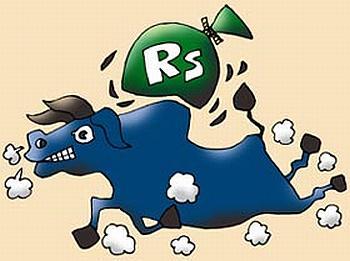Photographs: Rediff Archives Pankah Priyadarshi, Investmentyogi.com
The mutual fund industry is on a roll. There are many funds coming every month in the market and claim to offer solution to investors' appetite for returns. In the bull market, the number of funds swells as many fund houses come up with new fund offers.
The problem investors' face is choosing the right fund for their requirement. The problem is compounded when investors see that many funds have similar objective. For example, if an investor's objective is to preserve capital and gain returns, there are scores of funds that claim to do precisely that.
Click NEXT for more
How to build a SOLID mutual fund portfolio
Major types of mutual fund
Mutual funds offer wide varieties. However, they can be broadly divided into three major types:
Aggressive fund: These funds invest major part of their money in equities. Since equities are the riskiest investment of all, these funds entail high risk. The objective of such funds is to provide capital appreciation in the long run.
Balanced fund: These funds invest equal amount of money in equity and bonds. Since a significant part is investment in bond, the returns are low compared to aggressive fund. However, this also makes it less risky. The objective of these funds is to provide moderate returns by taking moderate risk.
Conservative funds: Conservative funds invest major part of the fund in bonds. Since bonds provide fixed return, these funds are considered safest of the three. The return is also low because of higher proportion of bond.
Click NEXT for more
How to build a SOLID mutual fund portfolio
Now let's take a look at some of the funds in these categories. The fund house 'HDFC' chosen here is purely for the purpose of illustration.
You can clearly see that in the long run, HDFC Top 200 has beaten the other two by a big margin. HDFC Balanced Fund also fared well compared to the HDFC Children's Gift Fund because of its investment in equity and bonds. The conservative fund HDFC Children's Gift Fund invested major part of its money in bonds and hence the return is lowest.
Take a look again at the range of returns. Return of the equity fund HDFC Top 200 varied from negative 4.67 per cent to positive 31.57 per cent. This is what makes equity fund risky. If you look at HDFC Children's Gift Fund, the fund has always given positive returns. This is what makes it safer.

Click NEXT for more
How to build a SOLID mutual fund portfolio
Building portfolio
A portfolio is nothing but a set of investment assets to mitigate the risk. For example, if I buy just one stock or invest in just one sector, any change in the specific company or the sector will impact my returns heavily. If I invest in a number of stocks and in number of sectors, I will not be impacted much by adverse movement of a specific company's business or a sector.
The only thing worse than buying a single stock or investing in one sector is diversifying into too many stocks and sectors.
So how many mutual funds an investor should have in his or her portfolio? Advisors generally agree that three to four mutual funds is all that you need in your portfolio.
Click NEXT for more
How to build a SOLID mutual fund portfolio
Following are the three most important driving factors of the portfolio mix:
1. Your objective
Your portfolio should represent your objective. If you have short term goal, you should invest in funds that are conservative as these funds will ensure a decent return and no loss of capital.
However, if you have long term goal, go for aggressive fund as aggressive funds do well in long term. Balanced funds are good for mid to long term.
Click NEXT for more
How to build a SOLID mutual fund portfolio
2. Investment period
A younger person has longer investment horizon and hence can afford to invest a larger portion of his or her savings in aggressive funds. An older person will rather invest in conservative funds to preserve his capital.
Typically a person of 30 years of age should invest 60 per cent to 70 per cent of her/his money in equity oriented mutual funds while a person of 50 years of age should invest 60 per cent to 70 per cent in conservative funds. Rest can invest somewhere in between these numbers.
Click NEXT for more
How to build a SOLID mutual fund portfolio
3. Risk appetite
The investment also depends on your risk appetite. Even if the investor is young, he or she may not invest major part of their savings in equity funds if the investor is risk averse.
Mutual funds are great way to build wealth for passive investors who either do not have time to study the businesses; neither have enough knowledge to take right decision. This is like outsourcing your work to a fund manager with a very little fee. Use this route to build wealth and happiness.









Comment
article